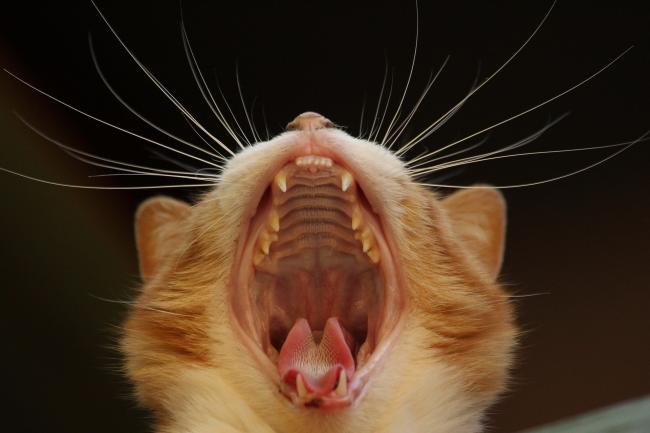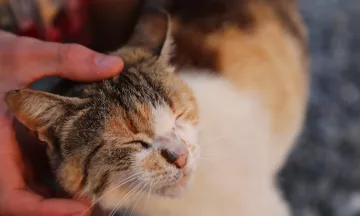Whiskers are not only gorgeous but are also incredibly useful for your cat. To make sure we don't accidentally harm our cat's '6th sense', it's essential for cat owners and cat sitters to know and understand how whiskers work and what we can do to protect them.
Whiskers play a hugely important role in the daily life of a cat. The individual strands have deep roots that lie next to sensitive nerves. The moment a whisker is touched or moves, the nerve sends a signal to the brain. The whiskers pass on important spatial information to the cat and are, in a way, an additional sense. If we want to keep our cat happy and healthy, it's important that we understand their whiskers. After all, we absolutely want to avoid causing accidental stress or pain to a cat.
The function of whiskers
Cats have whiskers on their eyebrows, around their nose and their upper lip. There are also slightly shorter whiskers on the back of a cat's front legs which have deep roots and are extremely sensitive. All whiskers can detect changes in the surrounding environment: even something as subtle as a change in airflow can give the cat important information. Whiskers are also important for sight at a short distance. Cats do not see well within a range of 30cm, so use their whiskers and nose to detect the surrounding environment.

The top whiskers can move independently of the lower whiskers so that the cat can touch and analyze the environment very precisely. This is useful at night when it's dark, or when a cat is hunting, for example. The eyebrow and cheek whiskers are also capable of warning the cat of approaching danger, while the eyebrow whiskers also protect the cat's eyes.
Cats also use their whiskers to communicate. Curious cats hold their whiskers forward, whereas anxious uncertain cats pull their whiskers back against their face and head.
A kitten is born deaf and blind, but their whiskers are already working to help them understand the surrounding environment. The mother cat knows that, too. Sometimes, if a kitten wanders too far from her, the mother bites the kitten's whiskers to shorten them so that the kitten has a smaller moving range. This is a clever trick, but is something that we humans should absolutely never do!
Protect your cat: prevent 'whiskers stress'
It's important to protect your cat's precious whiskers. Without whiskers, a cat feels totally unsafe and disoriented. Of course, a whisker can naturally fall out but will grow back again. Absolutely NEVER cut off a cat's whiskers!
Sometimes whiskers get in the way, for example, during a fight, during play-time, while sniffing or while eating. During these activities, a cat might pull their whiskers back against their head and as such temporarily 'deactivates' the whiskers.
However, a cat can still feel really uncomfortable when repeatedly eating from a deep or narrow food bowl. The bowl brushes against the whiskers and puts pressure on them, which can lead to severe sensitivity or pain. Prolonged eating from a deep, narrow food bowl can even stop your cat from eating or drinking.
Make sure you offer your cat shallow, wide food and water bowls or simply use a plate. And fill up the water bowl to the brim so that your cat does not have to bend down low for water.
Have you ever booked a cat sitter at Pawshake? Before you go away, be sure to give your cat sitter very clear instructions on feeding and water, so that you can be sure that your cat can be protected from whisker stress. And during the meet and greet, ask a lot of questions to make sure your cat sitter is well versed in keeping your precious cat happy while you are away.






